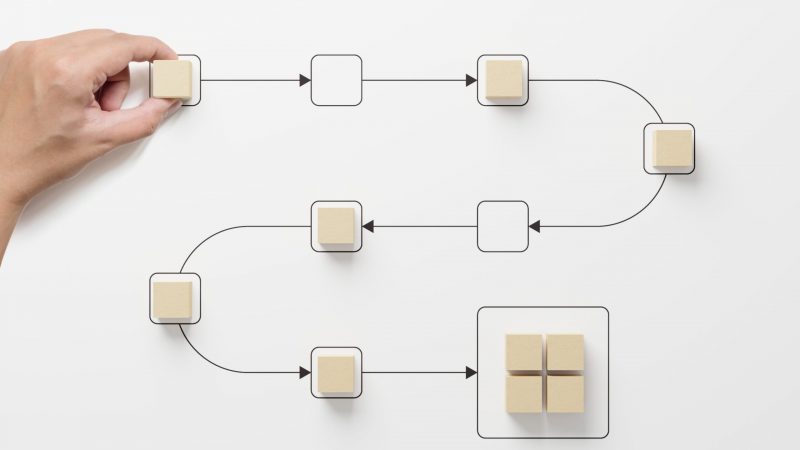Collaboration across your business is beneficial as it promotes innovation and breaks down barriers. This applies to finance and budgeting too. By involving teams from various departments in the budgeting process, you encourage active participation and create a sense of ownership in the financial planning’s success.
However, involving contributors from different parts of your organization in the budgeting cycle can be challenging.
What Is Collaborative Budgeting?
Collaborative budgeting involves employees and stakeholders from various departments in creating the budget. The main idea is to make the budgeting process involve different areas of the company, ensuring input from those directly affected.
This approach allows finance leaders to make decisions with a broader perspective, considering insights from different parts of the organization. The process begins with a bottom-up approach, where department leaders create initial budgets based on their needs and plans.
Each business unit manager might also propose a formal budget for review by the finance team. The goal is to include these proposals in the overall company budget. Collaborative budgeting aims to reach a consensus that meets the needs of the entire organization and promotes a better understanding of the budget.
Involving stakeholders in the budgeting process motivates teams to be more responsible with their spending.
How is a Collaborative Budgeting Process Structured?
Implementing collaborative budgeting effectively involves having a structured approach, including a clear process for gathering and reviewing budget input from different stakeholders. Here are essential steps to follow in establishing a collaborative budgeting process:
1. Define Budget Guidelines and Objectives
- Set clear budgeting guidelines and objectives aligned with the company’s overall strategic plan.
- Specify key financial targets like revenue, expenses, and profit margins, along with strategic priorities.
- Communicate these guidelines to all relevant teams.
2. Encourage Cross-Functional Participation
- Invite representatives from each business area to contribute to the budget process.
- Clearly communicate how they should develop and submit budget proposals, deadlines to follow, and the necessary participants.
- Department heads may lead the proposal for their units.
3. Streamline Data Collection and Analysis
- Define a streamlined process for data collection.
- Utilize a centralized budgeting and planning solution to automate data collection, minimizing version control issues and errors.
- Leverage reminders for team members to meet deadlines and ensure a smooth submission process.
4. Review and Consolidate
- Identify the team responsible for reviewing budget proposals and the analysis process.
- Schedule regular meetings with the core team to keep the budget process on track.
5. Facilitate Negotiation and Compromise
- Anticipate negotiation during the collaborative budgeting process due to conflicting priorities or resource requests.
- Foster open communication and encourage compromise to achieve a budget aligning with organizational goals and departmental needs.
6. Obtain Final Approval and Monitor Continuously
- Finalize the budget once a consensus is reached.
- Obtain senior management approval to establish the budget as the financial plan for the upcoming period.
- Implement a robust system for ongoing monitoring and reporting on budget performance throughout the year.
- Utilize financial planning software for better visibility, enabling informed decision-making by the finance team and departmental leaders.
Requisites of a Collaborative Budget Model
Security
Budgets contain sensitive data such as personnel information and salaries. In a shared budget system, it’s crucial to restrict access to data based on users’ roles in the organization. To achieve this, a collaborative budget model should incorporate role-based security, ensuring that each user sees only the information relevant to their specific job function. The view of the VP of Marketing, for example, should differ significantly from that of the CFO. It’s important to note that Excel is not equipped to handle such advanced security features.
Maintaining Financial Accuracy
In a genuine collaborative budgeting approach, many contributors may lack expertise in corporate finance and may not fully grasp the distinctions between a balance sheet, cash flow statement, or profit and loss (P&L) statement. The challenge lies in ensuring that the contributions from these individuals are accurately linked to the appropriate results and comply with US Generally Accepted Accounting Principles (GAAP).
To address this, collaborative budgets must incorporate a systematic approach to uphold the financial accuracy of the results. This system should enable non-finance team members, who may not be well-versed in financial terminology, to input data without causing errors. Essentially, the data entered by contributors, such as facilities management, should seamlessly connect to the correct outputs, even without the user recognizing this process.
Efficient Reporting
For a collaborative budget to succeed, it’s crucial to encourage self-sufficiency, especially in reporting. Many CFOs express their desire to create comprehensive reports once, ensuring financial accuracy, and then empowering the CEO or Board to take charge. This approach allows the CEO to independently track performance against plans, manage cash flow, and analyze profit and loss on a monthly or even weekly basis, without constant input from the CFO.
To achieve this transition of responsibility, the budget must have real-time data accessibility. Without it, the CFO may be compelled to manually update reports, which goes against the goal of promoting self-sufficiency. Instead CFOs should use budgeting and forecasting tools that allow them to collaborate and report efficiently.
Conclusion
Collaborative budgeting is great because it’s adaptable. You can customize and update it to match your organization’s preferences, processes, and goals. Regardless of how you implement it, a collaborative budgeting approach not only leads to well-informed decisions but also empowers employees, motivating them to contribute to achieving company goals—a valuable advantage for long-term business success.



